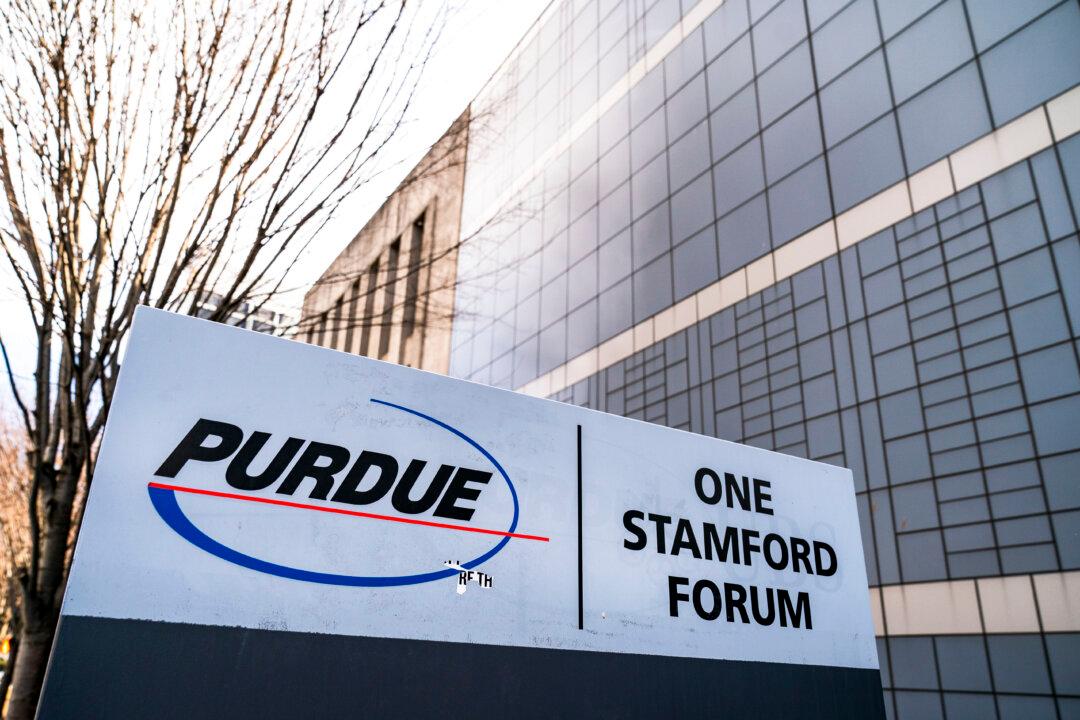Advocates warn that what’s at stake if developers and their foreign investors succeed in constructing offshore wind turbines along the east coast is a crucial food source and a rich cultural heritage preserved among fishermen.
“Generations of fishermen could be sacrificed on the altar of green energy,” Meghan Lapp told The Epoch Times.
Lapp is a representative for a commercial fishing company in North Kingstown, Rhode Island, called Seafreeze Ltd.
According to Lapp, commercial fishing is the seventh most regulated industry in the nation, more regulated than the pharmaceutical industry and oil and gas extraction.
“We are not free to go where we want, when we want, and catch what we want,” Lapp said. “As a result, the ocean is a very small place.”
With offshore wind companies siting leases in thriving commercial fishing waters, that ocean became an even smaller place, Lapp said.
Lapp and others in the commercial fishing industry have found that the Bureau of Ocean Energy Management (BOEM) can issue site leases anywhere without being required to analyze impact beforehand, with no follow-up requirement to see if contracted leases conflict with fisheries.
“So, what we’ve been seeing in the commercial fishing industry is massive amounts of our fishing grounds just being taken away, and nobody cares,” Lapp said. “And the federal government is moving ahead with breakneck speed to lease along the Atlantic coast.”
According to Lapp, 2.3 million acres have already been leased to build 3,500 turbines along the east coast waters, with 1.7 million acres planned to be leased in the future.
“The conflicts are enormous,” she said. “We’re not going to be able to fish in these areas because our gear is a net that is towed behind a vessel that skims the ocean floor. We can’t tow around turbines because there’s scour protection—which is lots of rocks—at the base of these turbines, and not only will our nets tear on the rocks, but our gear will also get hung on the underwater infrastructure of these wind farms.”
This isn’t just a threat to the gear, but it creates a serious hazard because when a net gets hung, it can flip the boat, Lapp said.

Regulatory Capture
BOEM acknowledged that fishermen couldn’t safely operate in the fisheries during development, Lapp said.“So, BOEM said it would mitigate the impacts, but to mitigate the impacts, you need to deconflict,” Lapp said. “But BOEM gives 100 percent deference to the developer regardless of what the issue is. It’s a case of regulatory capture.”
Regulatory capture is an economic theory describing a situation in which regulatory agencies become subjugated by the companies they were charged with regulating, leading to those regulatory agencies not ruling in favor of public interest but the interest of the company, a political interest, or an ideology.
In this case, Lapp said, BOEM is siding with developers who are rushing through the process to cash in on federal tax subsidies found in the Inflation Reduction Act, which has triggered a gold rush of surveying and development for on and offshore wind and solar.
“Because of this, the commercial fishing industry along the east coast, which is the oldest in the nation, is at risk of becoming extinct, and that’s unacceptable,” Lapp said.
Another issue is the wind turbines interfere with not only marine radar but also U.S. Coast Guard radar, Lapp said, which will create problems for search and rescue operations and national security.
“You can’t even travel through these things safely, and BOEM’s approving them anyway,” Lapp said. “So, not only are we losing valuable fishing grounds, but we’re also losing the ability to safely transit.”

‘It’s Devastating’
Seafreeze Ltd. is the lead plaintiff in a lawsuit (pdf) against the first federally permitted wind farm in the U.S. called Vineyard Winds.Among the federal agencies the plaintiffs are suing for declaratory and injunctive relief are the Department of Interior which oversees BOEM, and the Department of Commerce, which oversees the National Oceanic and Atmospheric Administration (NOAA).
The lawsuit alleges the federal agencies violated several environmental acts such as the National Environmental Policy, the Endangered Species, the Marine Mammal Protection, and the Clean Water Acts.
Each of the federal defendants, the lawsuit argues, violated federal laws in leasing and approving the construction of Vineyard Wind 1, which consists of 62 wind turbines spaced one nautical mile apart, 15 miles south of Martha’s Vineyard and Nantucket, and 35 miles from mainland Massachusetts.
“The federal government has been unresponsive to the impacts to us, and there is a clear federal policy to promote offshore wind and get it done, regardless of what the impact is,” Lapp said.
And the impact to fishermen, Lapp said, will be irreparable.
“We’re talking about taking millions of acres of the seafloor and turning it into an industrial factory, juicing the ocean floor with electromagnetic fields,” Lapp said. “Fish use the earth’s natural electromagnetic fields to navigate, and that’s going to be greatly disrupted.”
The up-to-1,000 feet high turbines generate a constant, low-frequency infrasound that, for marine life like squid, can be fatal, Lapp said.
“They get lesions on their internal organs, and they die,” Lapp said.
Then, there’s the issue with pile driving, Lapp said.
‘A Doomsday Scenario’
Long Island Commercial Fishing Association in Montauk, New York, is another commercial fishing association that is the plaintiff in the lawsuit.Bonnie Brady, the association’s executive director, told The Epoch Times that the industrialization of the ocean for wind development is “a doomsday scenario.”
“This is the biggest threat to our industry in the last 20 years that I’ve been involved in fisheries management,” Brady said. “For me, what makes this so insane is, didn’t we learn from COVID that it’s really important to know where your food comes from and to have national food security?”
Brady referenced the Magnus-Stevens Fishery Conservation and Management Act (MSA), the primary law that governs marine fisheries management in federal waters.
Among its regulations are ensuring a sustainable supply of seafood and protecting fish habitats.
Prior to its passing in 1976, international waters 12 miles from U.S. shores were being fished by foreign fleets.
“The MSA extended U.S. jurisdiction to 200 nautical miles and established eight regional fishery management councils with representation from the coastal states and fishery stakeholders,” NOAA said.
Sustainable fishery management plans were established in accordance with ten national standards.
Since Congress revised the MSA with the Sustainable Fisheries and the MSA Reauthorization Acts, both of which were written to revise and strengthen fishery management regulations.
Sold Out to Foreign Investors
“The whole point was to push the foreign fleets that were inshore next to U.S. boats 200 miles offshore so that we could grow our domestic fishing industry,” Brady said. “So, here we are 50 years later, and the EEZ has been sold out from under us by our own federal government to foreign government-owned energy companies.”On June 27, the New Jersey legislature passed a bill that would allow Orsted—a wind energy company 51 percent owned by the Danish government—to keep tax credits that it otherwise would have had to return to state ratepayers had the bill not passed.
The legislation was written to reduce the negative impact the COVID-19 pandemic and inflation had on developers, according to lawmakers.
“Copenhagen Infrastructure Partners, who purchased Vineyard Winds from OffshoreMW—a Blackstone company, was initially created by PensionDanmark, one of the country’s largest labor pension funds,” Brady said. “Since offshore wind energy makes up 8.5 percent of Denmark’s GDP, they must keep feeding the beast. And what does that mean? That means they bid on them, build them, sell them off to whoever wants to buy a piece for whatever ESG requirements they need, and then get out and keep building so they’re not there for when the liability hits the wall.”

‘There’s No Good Side to This’
A fishing community of family businesses and mom-and-pop shops face extinction if wind turbine development proceeds to the construction phase, Brady said.“And we’re being steamrolled by a lie fueled by dollars and will have catastrophic consequences,” Brady said. “There’s no good side to this.”
Brady maintains hope, she said, that more people will become aware of what’s at risk.
“You have to have hope, just like anything else,” she said. “They wouldn’t have gotten that flag up to Iwo Jima if they didn’t have hope.”
More and more, people seeing through the propaganda sold to them by these companies, she said.
“And they’re not afraid to say, I don’t want to look out into the horizon and see my ocean turned into an industrial wasteland,” Brady said.





